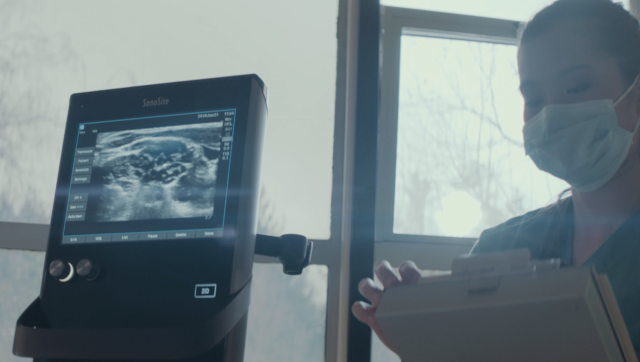
UC Irvine doctors share how technology is shaping medicine, from phone apps to brain surgery;
Taken from the Orange County Register. Full article available at http://www.ocregister.com/articles/ultrasound-663156-technology-medical.html
This article was brought to my attention today and my mind was brimming with all of the imagined funny comics about doctors using cell phones. It also reminded me that it has been quite a while since we brought SonoAccess to your attention.
So for those of you that have not yet downloaded Sonosite’s SonoAccess 2.0 Mobile App – A FREE on-demand library of first-class educational content for medical professionals and students. Here it is:
New SonoAccess 2.0 Offers:
- Personalized user profile that provides content most relevant to you
- Free downloadable content available offline
- What’s Newfeed showcasing the most up-to-date educational content and special announcements from Sonosite
- Easily shareable content with new social media integration
- 200+ videos organized by specialty, clinical application, and Sonosite System
- 100+ ultrasound images to reference and compare as you scan
- Access to important reimbursement information
Download SonoAccess 2.0 today for instant access to an extensive arsenal of clinical and product instructional videos, how-tos, case studies, clinical image galleries, and reference guides for point-of-care ultrasound.
You can access it through your phone app store or you can go to www.sonosite.com/education/sonoaccess
Back to the Article:
You can read the full article at http://www.ocregister.com/articles/ultrasound-663156-technology-medical.html
Three physicians from UC Irvine Health shared how technology is shaping their field of practice, during a recent lecture at Newport Beach Central Library. Here is a summation of what Dr J. Christian Fox had to say:
Power of sound
 Christian Fox, a professor of emergency medicine and assistant dean of student affairs, is a self-professed “sono-evangelist.”
Christian Fox, a professor of emergency medicine and assistant dean of student affairs, is a self-professed “sono-evangelist.”
With ultrasound machines getting smaller and smaller, Fox said, he envisions hand-held ultrasounds in the pocket of every doctor’s white coat.
Ultrasound imaging uses sound waves to visualize organs and other tissues in the body. Fox said his medical students can use the machines for 30 patient applications that can be done at the bedside.
“Everything from eyeballs to ankles, and all the organs in between, can be seen in much better resolution and a lot more accurately than the physical examination can ever dream of,” Fox said.
But reading ultrasound images takes a special skill, so the UCI medical school has built ultrasound training into the curriculum. It’s also working on an ultrasound suite to allow medical students and visiting physicians to practice.
“Ultrasound can be a bit of an art to perform,” Fox said. “It takes quite a bit of training and time to make these machines sing to you.
Fox said ultrasound care could cut down physicians’ use of CT scans – a series of X-ray images taken together to visualize the inside of the body which can add up to a lot of radiation over time, he said.
“If the answer can come from sound waves and not X-rays, we should not be ashamed to reach for ultrasound first,” Fox said.

